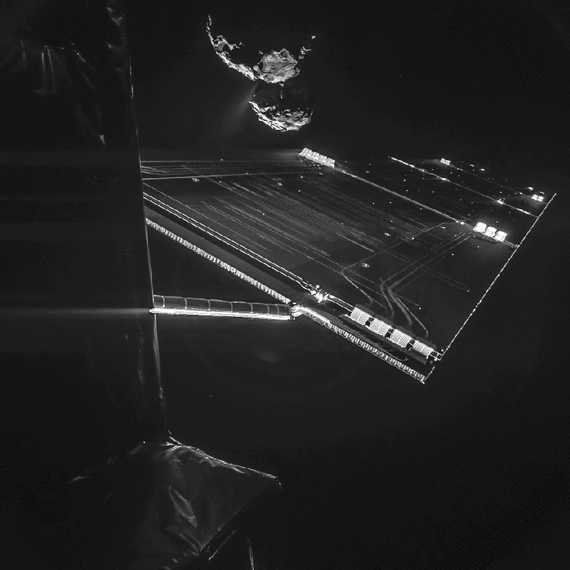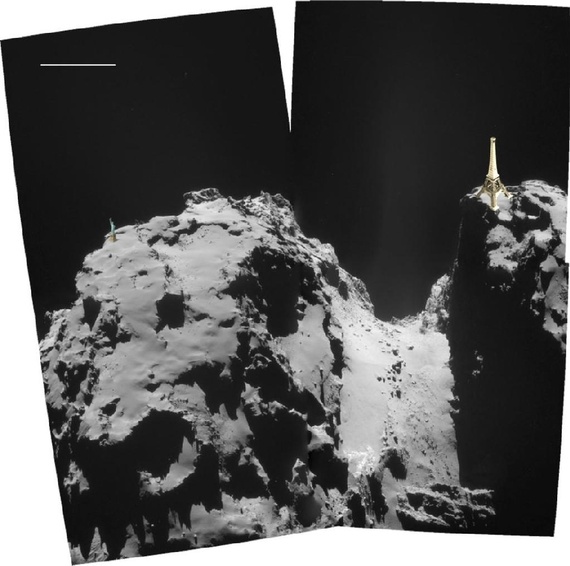
On Wednesday morning, humanity accomplished something it had never done before: It landed a spacecraft on a comet.
Or, to be more specific, the European Space Agency’s spacecraft named Rosetta released a probe named Philae near a comet called “67P/Churyumov-Gerasimenko.” Then, Philae—weighing 220 pounds on Earth and about the size of a washing machine—harpooned itself to the dirty snowball and landed safely on its surface.
This all took place 311 million miles from Earth—so far that it took half an hour for news of the successful landing to reach terrestrial researchers—and while Rosetta, Philae, and Comet 67P were all traveling at about 34,000 miles per hour.
It was, in other words, quite the feat.
One thing that’s struck me reading all the news, though, is that it’s hard to make out the comet’s scale. Out in the void of space, floating objects lack context. In the beautiful October “selfie” from Rosetta (above), for instance, you can’t tell if Comet 67P is massive and far away or boulder-sized and fairly close.
Which is why I’m so appreciative of this illustration from the designer David Yee. Using the quarter-mile scale indicator provided by the ESA, Yee mocked up how large the Eiffel Tower and the Statue of Liberty would look if they sat on 67P’s surface.

The two landmarks, earthly icons of bigness, seem to shrink next to the comet. That helped me make sense of how human explorers would look on 67P’s surface—and how washing-machine-sized Philae would look too.
Yee isn’t the only designer who tried to make sense of 67P’s scale today. In this morning’s Washington Post, the comet was compared to something even more fantastic. The designers, hunting for a sight that readers are used to interposing against the abyss of space, settled on something familiar if fictional, and included it at the bottom of the page almost as a joke.
So, this morning, eating their soggy Froot Loops, the paper-reading residents of America’s capital district learned: Comet 67P/Churyumov-Gerasimenko even dwarfs an Imperial Star Destroyer.
This article was originally published at http://www.theatlantic.com/technology/archive/2014/11/how-philaes-comet-compares-to-the-statue-of-liberty-and-eiffel-tower/382692/
